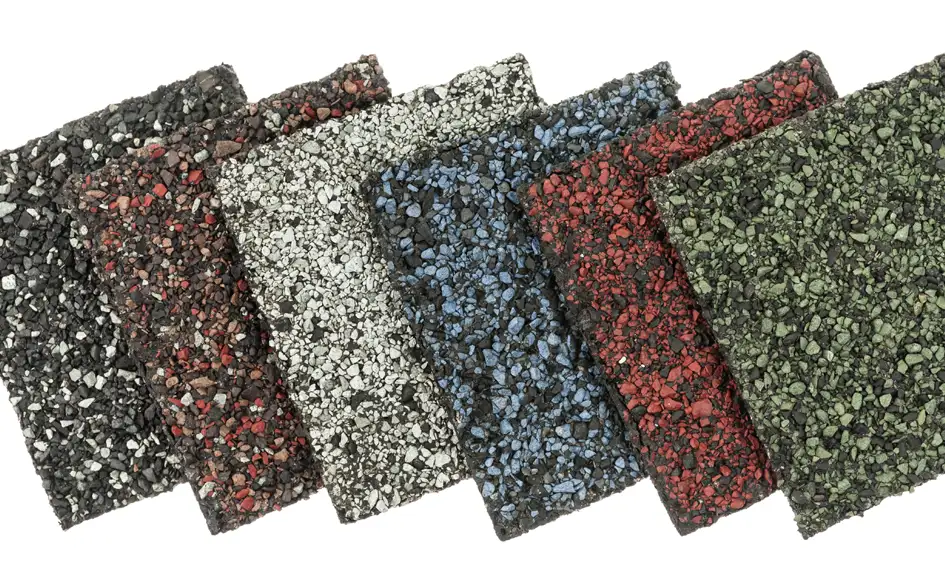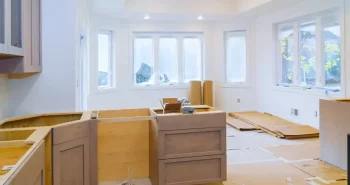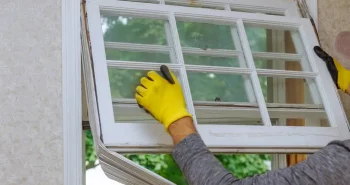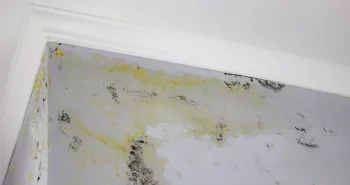Whether you’re building a new residence, making upgrades to your current home, or renovating a newly purchased property, the roof is one of the most important features to consider. How you construct your roof can impact the overall energy efficiency of your home, the aesthetics, and even the level of interior comfort. Many people focus on choosing the right type of roofing material for their goals, but the question of color often comes into play. There’s varying information regarding the importance of light vs. dark hues, but does the color of your roofing shingles actually matter? Below, we’ll cover everything you need to know regarding this consideration.
What to Know About Dark Shingles vs. Light Shingles
Dark roofing shingles tend to release heat faster, which can be good if you live in an area that’s prone to low temperatures and lots of snow fall. Dark shingles can expedite the rate of snow melt, which reduces your risk of ice dam formation or flooding on the roof. In areas that receive a lot of sunlight, the solar absorption could also mean that dark shingles may deteriorate faster, as they absorb more UV light that can breakdown the materials.
Light roofing shingles are good at reflecting heat, meaning they don’t absorb as much sunlight. This is beneficial in areas that receive a lot of sunlight year-round, as it can help improve the energy efficiency of your home. Light shingles are also effective at keeping attic temperatures down, which can help lower your reliance on your air conditioner during the summer months.
How Can the Color of Your Roofing Shingles Affect Your Home?
When comparing the differences between dark and light shingles, there are a few ways they can affect your home and your overall comfort levels. In addition to the solar absorption described above, the color of your shingles can play a role on attic temperature, curb appeal, and overall longevity of your roofing structure.
Attic Temperature
The color of your shingles can have an impact on the overall temperatures within your attic and, therefore, within your home. This is because of the solar absorption disparities between light and dark colors. In fact, depending on the differences, shingle color can lead to varying attic temperatures that range between 20 and 40 degrees. This would mean that you’d need to rely more heavily on your HVAC unit, which would increase your energy consumption and utility bills. Light shingles tend to be better for homes that are in warmer climates year-round, while dark shingles are better for primarily colder climates.
Curb Appeal and Style
Dark shingles can portray a modern appearance, especially if you have complementary features on your home’s exterior. If your exterior paint is on the darker side, having light shingles can create a clash between aesthetics. As a general rule of thumb, most homeowners tend to find that dark goes with dark, and light goes with light. Bricks also tend to match better with dark roofing to create a more classic appearance. However, dark colors can make a home feel smaller so you may want to take that into consideration before making any drastic changes.
Overall Longevity
Some people believe that the color of the shingles also have an impact on longevity and durability of the roofing materials. Darker shingles do tend to attract more sunlight, so they may deteriorate faster. However, the most important factor when taking care of your roof is ventilation and ongoing repairs. Regardless of the color of your roof, proper attic ventilation and regular roof inspections can help you get the most out of your roof for as long as possible.
The Most Important Roofing Consideration to Make
For many homeowners, one of the most important factors when investing in a new roof is aesthetics. The roofing structure tends to make up close to 40% of your home’s overall visual appearance. Depending on the color of your house, this could mean that light shingles may clash with the design and create an eyesore. To uphold a degree of curb appeal, this is something that should be taken into consideration. Especially if you play to sell your home before replacing the roof again.
In addition to the color of your shingles, the type of your roofing materials also plays a large role in how your home regulates internal temperatures. For example, asphalt shingles tend to be less reflective than metal roofs, but that doesn’t necessarily mean that metal roofs are bad. In fact, there are several benefits to metal roofing, it just depends on your home and subsequent roofing needs. How your roof is installed will also impact its overall efficiency. That’s why it’s important to find a qualified roofing contractor and avoid hiring a company without adequate experience. Signs of a poor roofing job can quickly lead to problems and premature replacements down the road.
Finally, geographic location will be a big determinant on how much the color of your roof actually impacts its function. In areas that receive both extremes, color doesn’t seem to matter as much. Half of the year you will benefit from light shingles, and half of the year you’d benefit from dark shingles. Unfortunately, you can’t replace them every six months—it’s just not economical nor would it make much of a difference. To reap the benefits of an efficient roofing system, it’s important to pay attention to ventilation and some other key components. Your roofing contractor can help you determine the best course of action for your needs.
The Best Way to Choose a Shingle Color That Complements Your Home
Choosing the color of your roofing shingles can be a difficult decision. It’s a long-term commitment that can impact your home’s energy efficiency, curb appeal, and ongoing levels of comfort. In certain climates, light roofing shingles are a smart decision, while other home’s fair better with dark shingles. Most homes can be paired well with either a dark or a light color since your options can range from black and brown to white, green, or even a blue color. One of the best ways to find the right color shingles for your home is to work with your roofing professional. Contractors that have years of experience can provide you with a professional opinion to help you achieve your long-term roofing goals based on your current structure, local environment, aesthetic goals, and more. You can also check the roofing colors of your neighbors to get an idea of what’s popular in your region.
Although light roofs tend to be more common, dark roofs do carry their own benefits. Since shingles aren’t a roofing component that you can easily switch out as the seasons change, it’s an important consideration to make. A great option for many homeowners is to use a shingle color that has a mix of both dark and light elements. This is especially common in regions that experience both climate extremes. To reap the benefits of mixed shingle colors, talk to your roofing contractor about using a blend of gray shingles.
Should You Install a New Roof?
Depending on the age and condition of your roof, it may be worthwhile to undergo a replacement. Although it’s a big investment, there are several long-term benefits. However, if you’re unsure about whether or not you should undergo a roof replacement, begin the process by speaking with a professional contractor to get a more realistic idea of cost and time commitment. This will give you the opportunity to weigh your options and choose the best course of action.
With that being said, if you notice signs of deterioration, or if your roof is unable to pass an inspection, it’s important to undergo a roof replacement sooner rather than later. Installing a new roof is important for the safety of you and your family. With regular roof inspections and maintenance, you can avoid premature replacements. For a stronger understanding of your roofing situation, talk to the professional roofing contractors at First Star Exteriors.
First Star Exteriors believes there’s a perfect balance between hands-on, personable treatment, quality of work, and speed of delivery. Our roofing contractors always take the time to understand your needs and communicate effectively from the first quote to the last nail placed. To learn more about our roofing options or to get a quote from us today within 48 hours, contact us at (479) 267-4800 or fill out our contact form here.





